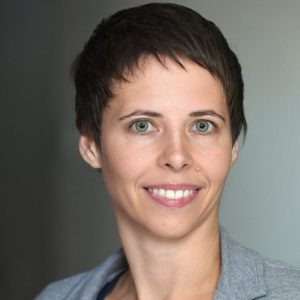Biography
The main goal of my research is to understand how complex regulatory networks govern quantitative information processing and molecular decision-making during mammalian differentiation processes. During my PhD, I combined quantitative experiments and modeling to dissect the gene-regulatory network governing differentiation of type 1 T-helper lymphocytes, whereby I solved a long-standing question regarding the respective roles of IFN-γ and IL-12. For my postdoctoral research, funded by an HFSP long-term fellowship, I moved to a new field, epigenetics, because I believed that this layer of regulation was crucial to understand how transcriptional states are maintained in mammals. I learned how to apply genome-wide techniques and found that genes within the same topologically associating domain (TAD) tend to be co-regulated, providing a first indication for the functional role of TADs, which has since then been confirmed in numerous studies. Moreover, I discovered fundamental sex differences in embryonic stem cells with regard to pluripotency and differentiation that are only relieved once X-dosage compensation has occurred through X-chromosome inactivation. In 2015 I started as a Max Planck research group leader to identify the regulatory principles that control transcriptional states in mammals, using the onset of X-chromosome inactivation as a model.
Education and positions held
- 2014 – present
- Max Planck Research Group Leader at the MPI for Molecular Genetics, Berlin
- 2010 – 2013
- Institut Curie, Paris, France, Postdoc with Prof. Edith Heard, funded by HFSP long-term fellowship
- 2005 – 2009
- PhD, Biophysics, Humboldt Universität, Berlin
- 1999 – 2005
- Diplom, Biochemistry, Eberhard-Karls-Universität Tübingen
Research Summary
We are interested understanding how transcriptional states are established in response to multiple quantitative input signals and how they can then be stably maintained. As a model, we study the regulatory principles that restrict expression of Xist, the master regulator of X-chromosome inactivation, to exactly one randomly chosen X-chromosome in females. To this end, we combine theoretical, computational and experimental approaches. We have recently developed the first experimentally-validated mathematical model of the Xist regulatory network that can explain seemingly diverse Xist expression patterns in different species. Moreover, we use pooled CRISPR screens to identify missing regulators and cis-regulatory elements, combined with genome-engineering and (single-cell) genomics to quantitatively profile the players and interactions within the Xist regulatory network. In this way we aim to elucidate the principles the govern transcriptional and epigenetic regulation in the mammalian genome.
Key publications
- Barros de Anrade e Sousa L*, Jonkers I*, Syx L, Dunkel I, Chaumeil J, Picard C, Foret B, Chen C, Lis JT#, Heard E#, Schulz EG# and Marsico A#. Kinetics of Xist-induced gene silencing can be predicted from combinations of epigenetic and genomic features. Genome Research, 2019, doi:10.1101/gr.245027.118
- Mutzel V, Okamoto I, Dunkel I, Saitou M, Giorgetti L, Heard E and Schulz EG. A symmetric toggle switch explains the onset of random X inactivation in different mammals. Nature Structural and Molecular Biology, 2019, 26.5, 350-360, doi:10.1038/s41594-019-0214-1
- Schulz EG, Meisig J, Nakamura T, Okamoto I, Sieber A, Picard C, Borensztein M, Saitou M, Blüthgen N and Heard E. The two active X chromosomes in female embryonic stem cells block exit from the pluripotent state by inhibiting the MAPK signaling pathway,
Cell Stem Cell, 2014, 14:203-2016, doi:10.1016/j.stem.2013.11.022 - Nora EP, Lajoie BR*, Schulz EG*, Giorgetti L*, Okamoto I, Servant N, Piolot T, van Berkum NL, Meisig J, Sedat J, Gribnau J, Barillot E, Blüthgen N, Dekker J# and Heard E#. Spatial partitioning of the regulatory landscape of the X-inactivation centre, Nature, 2012, 485(7398):381-5, doi:10.1038/nature11049
- Schulz EG, Mariani L, Radbruch A and Höfer T. Sequential polarization and imprinting of type 1 T-helper lymphocytes by interferon-γ and interleukin-12, IMMUNITY, 2009, 30 (5), 673-683, doi:10.1016/j.immuni.2009.03.013

